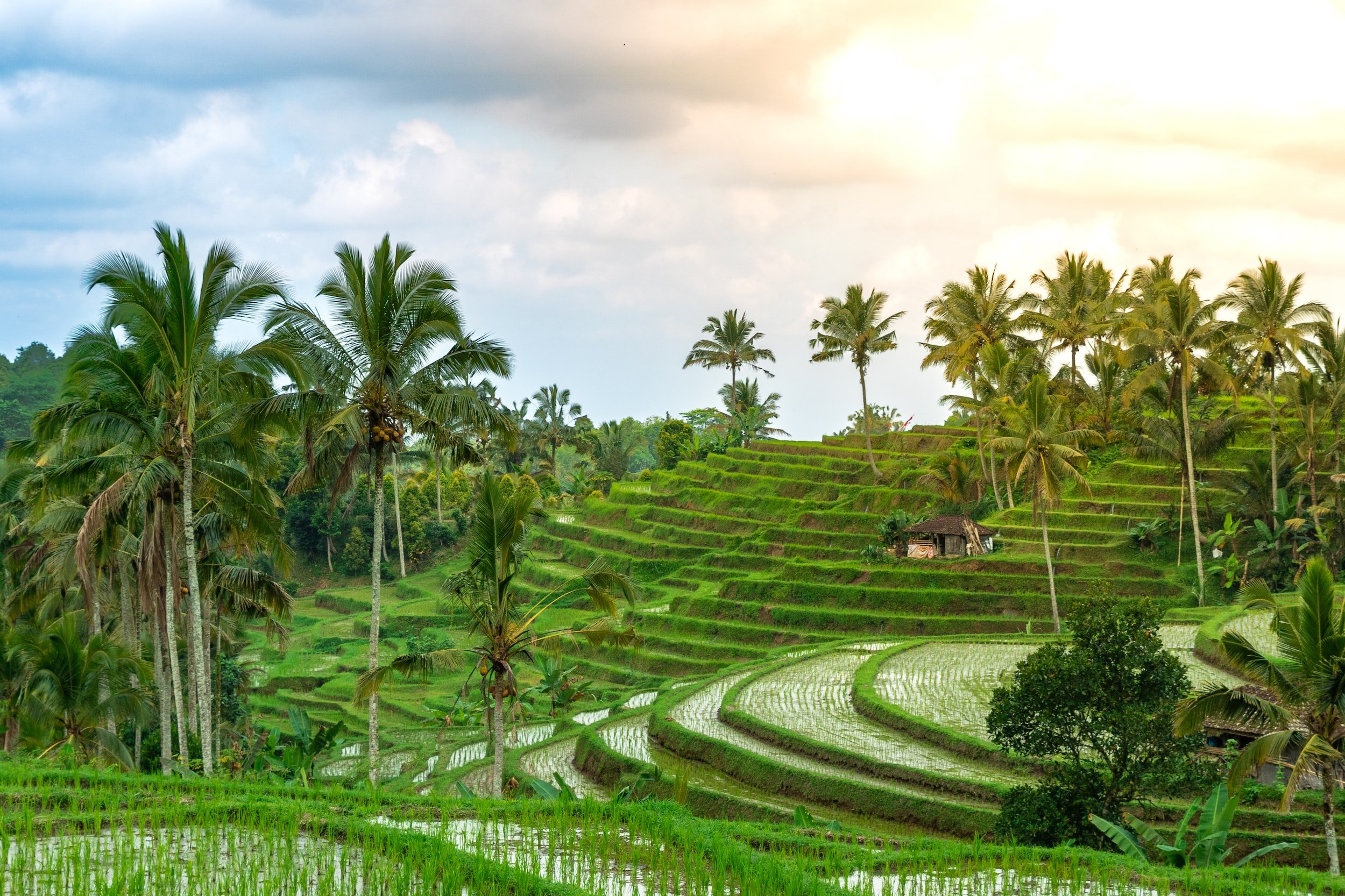
Cascading Beauty: Exploring Bali’s Rice Terraces
Bali, known for its stunning landscapes, is adorned with rice terraces that paint a picturesque scene of natural beauty and cultural significance. Let’s delve into the lush green expanses and discover the captivating allure of Bali’s rice terraces.
The Artistry of Subak: Balinese Agricultural Traditions
At the heart of Bali’s rice terraces is the ancient Subak system, a traditional agricultural cooperative dating back to the 9th century. This intricate system showcases the Balinese philosophy of “Tri Hita Karana,” emphasizing harmony between humans, nature, and the divine. As you explore the terraced fields, you witness the living artistry of Subak in action, where water is shared sustainably to nurture the vibrant green rice paddies.
Tegallalang: Bali’s Iconic Rice Terrace Landscape
One of the most iconic locations to witness Bali’s rice terraces is Tegallalang. The landscape here is a masterpiece of sculpted rice paddies, creating a stunning mosaic of terraces that cascade down the hillsides. The intricate design of Tegallalang’s rice terraces has made it a beloved destination for photographers, artists, and travelers seeking the quintessential Balinese countryside experience.
Jatiluwih: UNESCO-Listed Agricultural Heritage
Jatiluwih, a cultural landscape recognized by UNESCO, boasts expansive rice terraces against the backdrop of Bali’s highest peak, Mount Batukaru. The breathtaking scenery in Jatiluwih is a testament to the sustainable agricultural practices that have been preserved for generations. Walking through the verdant fields, visitors are immersed in the grandeur of Bali’s agricultural heritage.
Rice Terrace Trekking: A Journey Through Green Valleys
For those seeking an immersive experience, embarking on a rice terrace trek is a must. Guided tours take you through lush green valleys, allowing you to witness the daily rhythm of traditional farming life. The terraced landscapes provide not only a visual feast but also a deep connection with the agrarian traditions that have shaped the island’s identity.
Balinese Subsistence Farming: A Way of Life
Bali’s rice terraces are not merely a scenic attraction but a testament to the island’s subsistence farming practices. The farmers, often seen wearing traditional conical hats, work the fields with meticulous care, tending to the rice plants that sustain their communities. Observing their daily rituals offers insight into the symbiotic relationship between the Balinese people and their land.
Sunset Magic: Rice Terraces Bathed in Golden Hues
As the sun begins its descent, Bali’s rice terraces transform into a magical panorama bathed in golden hues. Sunset becomes a mesmerizing spectacle, casting long shadows over the terraced fields and creating a serene ambiance. Watching the sun dip below the horizon amidst the lush greenery is an unforgettable experience that adds another layer of enchantment to Bali’s rice terraces.
Preserving the Green Heritage: Sustainable Tourism Initiatives
With the increasing popularity of Bali’s rice terraces, there is a growing awareness of the need for sustainable tourism practices. Initiatives are in place to preserve the cultural and ecological integrity of these landscapes. Visitors are encouraged to support local communities and adhere to responsible tourism guidelines, ensuring that future generations can continue to enjoy the beauty of Bali’s rice terraces.
Capturing the Essence: Photography Tips for Rice Terrace Views
For photography enthusiasts, Bali’s rice terraces offer a plethora of opportunities to capture stunning images. Whether framing the intricate patterns of the terraces or focusing on the play of light during sunrise or sunset, these landscapes provide endless possibilities for creative expression. Remember to respect the environment and the local communities while capturing the essence of Bali’s rice terraces through your lens.
To plan your journey through Bali’s enchanting rice terraces, visit tiny-planes.com. Immerse yourself in the timeless beauty of these green landscapes and witness the living artistry of Balinese agriculture.
